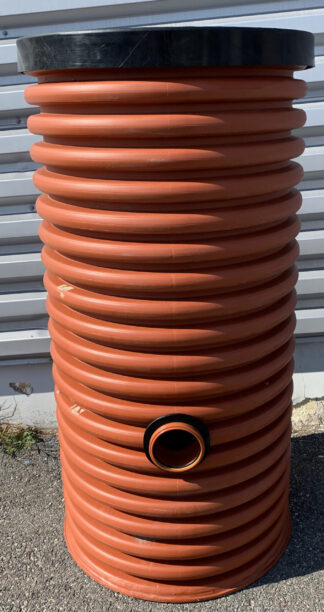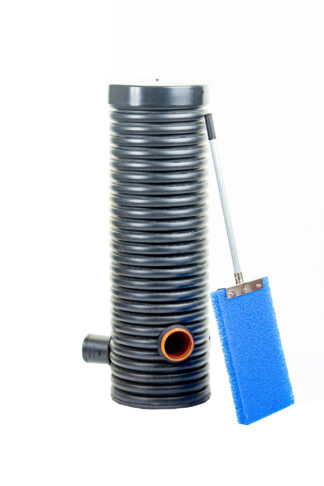Your cart is currently empty!
Sediment Trap Well
A Sediment Trap Well is a small well designed to capture sediment, sand, soil, and other heavy particles before the water continues into a drainage or stormwater system.
It functions like a mini sediment trap, protecting pipes, pumps, and infiltration systems.
🟩 What Is a Sediment Trap Well?
A sediment trap well contains a sump at the bottom where heavier particles settle.
This allows only the cleaner water to continue to the next part of the system, such as:
- stormwater pipes
- drainage pipes
- infiltration systems
- pump chambers
- soakaways / rock pits
- stormwater tanks or modules
The sediment remains in the bottom of the well and must be cleaned out periodically.
Why Are Sediment Trap Wells Used?
They are used to:
✔ 1. Protect infiltration systems and soakaways
Sediment and sand can clog infiltration beds very quickly.
A sediment trap prevents this.
✔ 2. Protect pumps
In LTA/LPS and drainage pump stations, sand and gravel can damage the pump.
✔ 3. Prevent clogging in pipes
Especially where drainage or stormwater contains a lot of particles.
✔ 4. Capture material from roofs, drains, or ground surfaces
Leaves, sand, soil, and debris are stopped before reaching the pipe network.
Where Are Sediment Trap Wells Used?
Common locations:
✔ Stormwater systems
– between downpipes and soakaways or stormwater networks
✔ Drainage systems
– to capture soil and gravel from drainage pipes
✔ On-site wastewater systems
– before infiltration or soil treatment beds
✔ Pump chambers
– to protect sewage or drainage pumps
✔ Industrial areas & yards
– where surfaces release a lot of sand and debris
How Is a Sediment Trap Well Constructed?
A typical unit contains:
- Well chamber (plastic or concrete)
- Sediment/sand trap (sump) at the bottom
- Inlet and outlet pipes with correct height difference
- Tight cover (A15 or B125 depending on placement)
- Cleaning access from the top
Size is usually 200–600 mm in diameter.




